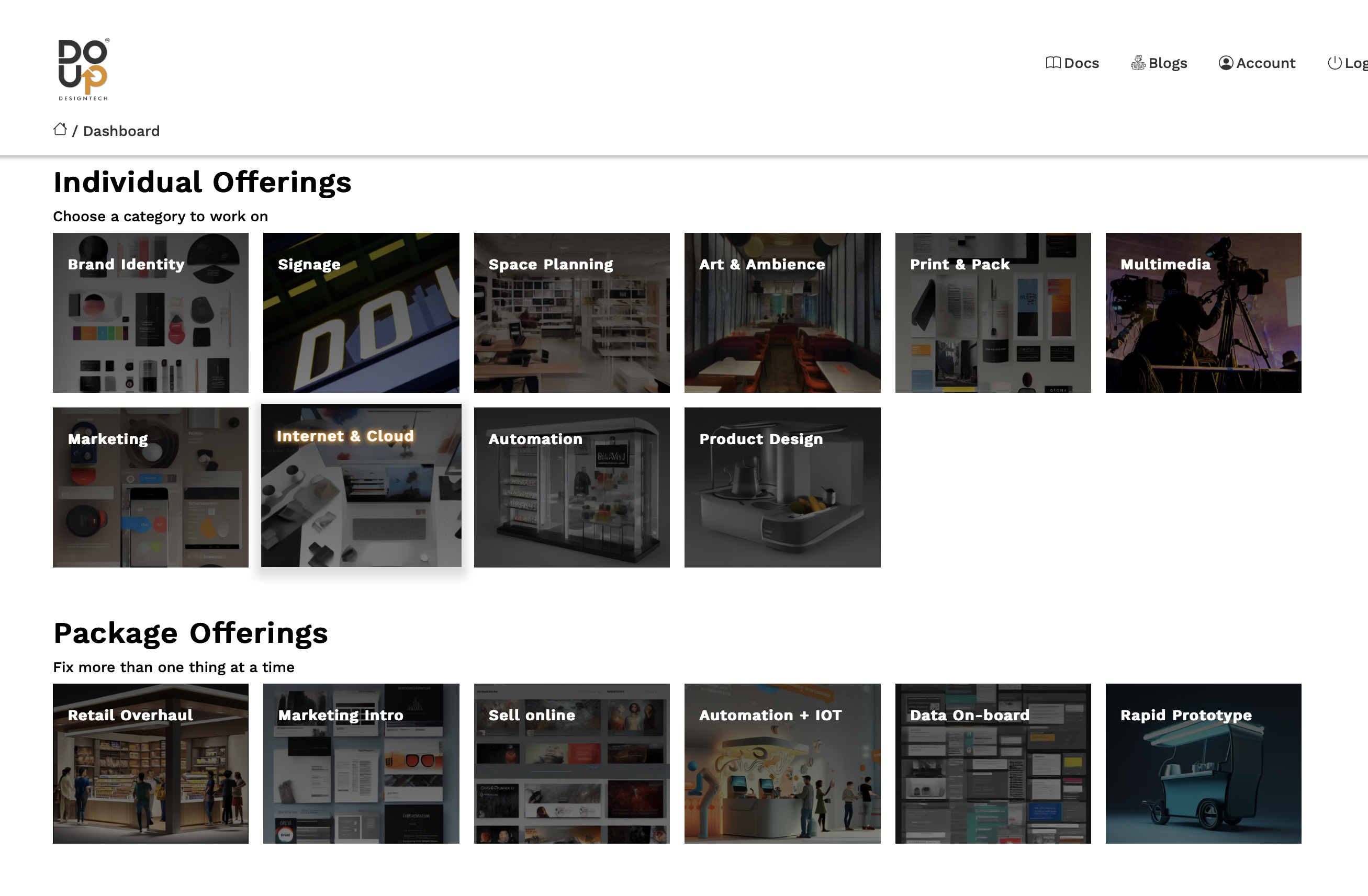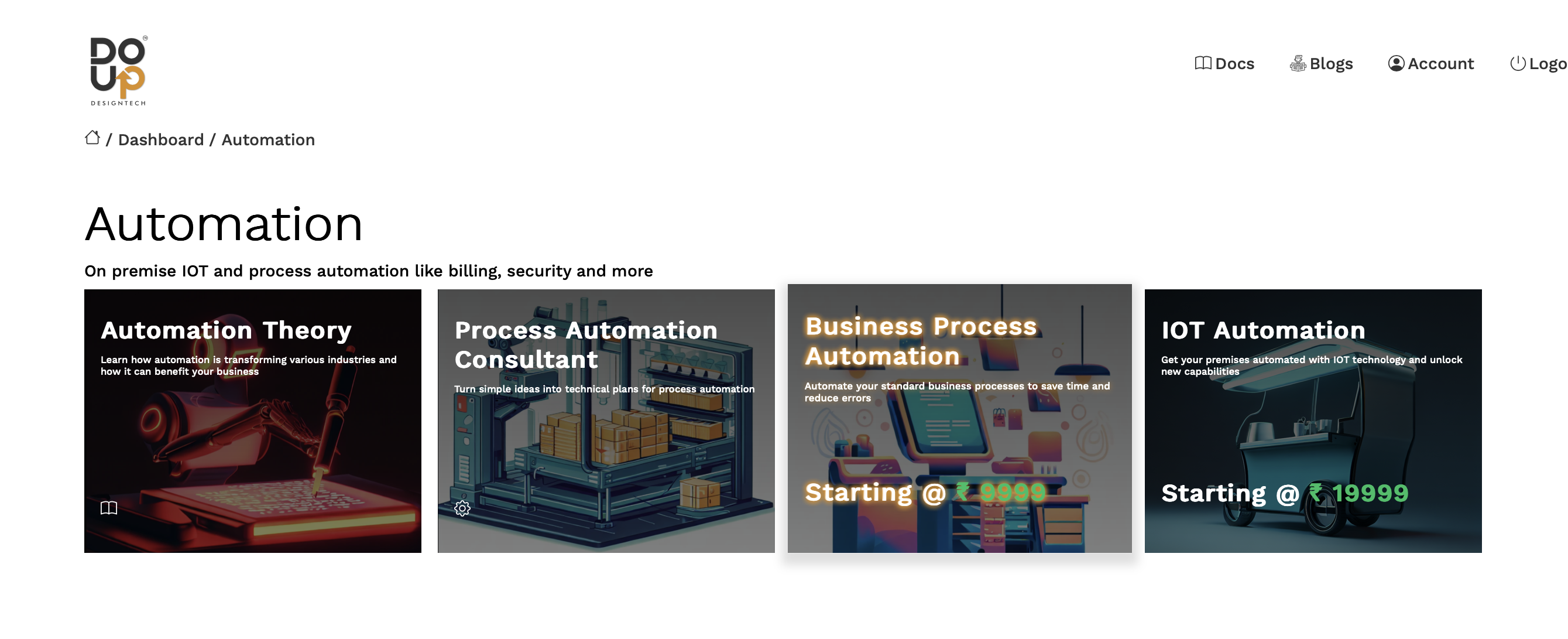Scalable Technologies for Efficient and Affordable Retail Management

By Do Up AI, Category : Retail
, 12 min read
Scalable technologies and software can help retailers efficiently manage their operations and expand their business. In this blog post, we explore the benefits of such technologies for retailers in India.

The retail industry in India has seen a significant transformation over the past few years, with the growth of e-commerce and the increasing adoption of technology. One of the key challenges faced by retailers is the efficient management of their operations, especially for small retailers who lack the resources and technical expertise to implement complex systems. This is where scalable technologies such as point-of-sale systems and inventory management software can make a significant difference.
In this blog we look at how a grass roots business like a Kirana shop or any other kind of retail venture can gain momentum with the adoption of technologies designed to streamline and automate aspects like showcasing, selling and delivering products to customers.
The transformation of the retail industry, particularly in developing economies like India, through the adoption of technology, presents both opportunities and challenges, especially for small retailers such as Kirana shops. These traditional businesses form the backbone of India's retail sector and play a crucial role in the country's economy.
However, their growth and efficiency often lag due to a gap in technological adoption exacerbated by a lack of education and fear of high costs associated with advanced technology.
Traditional Challenges
- Lack of Technical Knowledge: Many small retailers have limited understanding of digital tools and technologies. This lack of knowledge can make the adoption of new technologies seem daunting, leading to resistance against change.
- Perceived High Costs: Advanced technologies are often perceived as expensive, making small retailers hesitant to invest in them. The initial cost of technology, along with the fear of ongoing expenses for maintenance and updates, contributes to this challenge.
- Risk Aversion: Small retailers in developing economies tend to be highly risk-averse. The fear of making a wrong move and the potential financial consequences make them resistant to adopting new practices, especially when they involve technology.
- Operational Inefficiencies: Without the aid of technology, small retailers face inefficiencies in inventory management, sales tracking, and customer management, which can lead to lost sales opportunities and reduced customer satisfaction.
Bridging the Gap with Scalable Technologies
Lets look at some popular techniques of aiding or automating traditionally manual tasks in a retail setting.
Point-of-Sale (POS) Systems: Modern POS systems offer more than just transaction management. They can integrate inventory management, provide sales reports, and even offer insights into customer preferences. For a Kirana shop, this means streamlined operations, better stock management, and enhanced customer service—all leading to increased sales and profitability.
Inventory Management Software: This software can dramatically reduce the time and effort required to manage stock levels, forecast demand, and reorder products. By automating these processes, retailers can avoid stockouts and overstocking, ensuring that capital is not tied up unnecessarily.
Digital Payments and E-Commerce Integration: Adopting digital payment methods and integrating with e-commerce platforms can open up new sales channels. This not only provides customers with convenience but also allows retailers to reach a wider audience beyond their immediate geographic location.
Customer Relationship Management (CRM) Systems: These systems help retailers manage customer data, track purchases, and tailor marketing efforts. Personalized communication based on purchase history can enhance customer loyalty and encourage repeat business.
These are only few examples from a wide catalog of already deployed and tested technologies, please note that in designing work flows with today's technology, a lot more is possible due the availability of affordable computation and automation platforms, than what is listed here.
Overcoming Challenges
- Education and Training: Providing basic digital literacy and training to retailers can demystify technology and encourage its adoption. Partnerships with tech companies, government initiatives, and non-profit organizations can facilitate this training.
- Cost-effective Solutions: Technology providers can offer scalable and affordable solutions tailored to small retailers. Subscription-based models or pay-as-you-go plans can reduce the initial financial burden.
- Success Stories and Case Studies: Sharing success stories of small retailers who have successfully adopted technology can inspire others to follow suit. These stories can demonstrate the tangible benefits of technology adoption, helping to overcome risk aversion.
For grassroots businesses like Kirana shops, the adoption of technology is not just about staying competitive; it's about survival and growth in the digital age. By leveraging scalable technologies designed for their specific needs, these retailers can overcome traditional barriers, streamline their operations, and enhance their service offerings. The key lies in education, support from technology providers, and a willingness to embrace change.

Leveraging Inter-generational Change
The intergenerational transfer of businesses, particularly in the context of small and family-owned retail ventures like Kirana shops in India, presents a unique opportunity for technological integration and innovation. The combination of decreasing technology costs, even as Moore's Law reaches its limits, and the inherent tech-savviness of younger generations, creates fertile ground for transformative changes in these businesses. This shift could herald a new era of growth, innovation, improvement, and expansion for small retailers, driven by a synergistic blend of design thinking and technology strategy.
Tech-Savvy Succession: Younger generations taking over family businesses are generally more comfortable with technology. They are more likely to be aware of and interested in leveraging the latest digital tools to enhance business operations, customer engagement, and sales channels.
Innovation Mindset: With fresh perspectives, the new generation can bring innovative thinking to traditional business models. This can include integrating e-commerce, utilizing social media for marketing, and employing data analytics for better decision-making.
Design Thinking: This approach involves solving problems creatively and empathetically. Young entrepreneurs can use design thinking to identify customer needs and pain points more effectively, leading to the development of more user-friendly services and products.

Strategy for Adoption
Technology-Thinking Strategy: Developing a strategy that prioritizes technology adoption in line with business goals. This includes assessing which technologies can offer the highest return on investment and improve customer satisfaction.
Partnerships and Collaborations: Small retailers can partner with tech companies, government bodies, and educational institutions to gain access to affordable technology and training.
First-Mover Advantage: Retailers who are early adopters of emerging technologies can shape the industry landscape. By setting new standards for customer service, operational efficiency, and innovation, they can establish themselves as market leaders.
- Importance of localization: Remember that successful solutions need to be adapted to the local language, cultural context, and infrastructure realities of India.
- Focus on solving specific problems: Rather than just implementing technology for its sake, identify critical pain points faced by these businesses and tailor solutions to address them directly. This will ensure a high perceived value and encourage adoption.
- Importance of community and support: Building a strong community of tech-savvy young entrepreneurs and providing them with support, training, and mentorship will be key to accelerating this transformation.

Conclusion
The generational handover of businesses, combined with the evolving landscape of technology, presents an unprecedented opportunity for small retailers. The younger generation's familiarity with technology, coupled with strategic design and technology thinking, can drive significant improvements in the retail sector. This period of transition could see the emergence of a new retail paradigm, where technology-driven solutions are not just add-ons but integral components of business operations. For those willing to lead the charge, the potential rewards include not just survival and growth but the chance to redefine the retail experience in India and beyond.